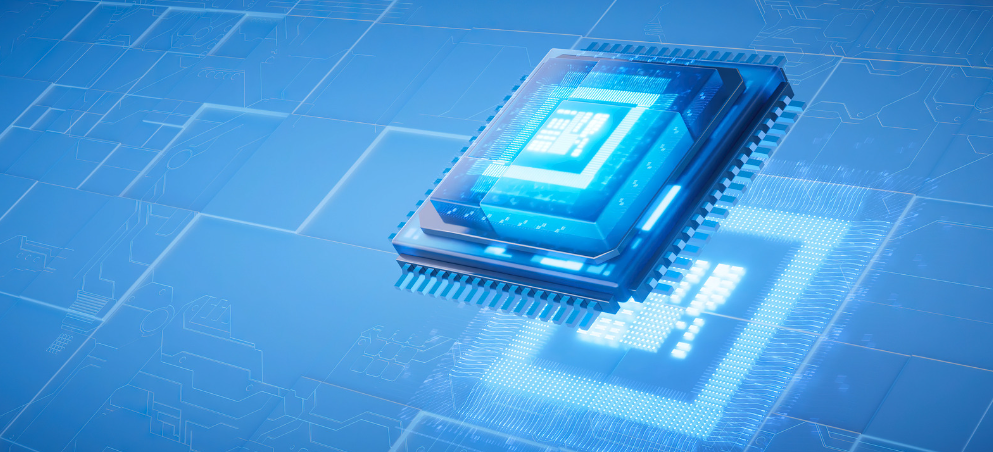Inside the Intel Core Ultra Processors

More from the Category
Intel’s Core Ultra series represents a major leap in processor technology, marking the company’s first integration of a dedicated Neural Processing Unit (NPU) into consumer-level CPUs. This new generation is designed not only to enhance traditional computing power but also to drive AI-specific workloads directly on devices, a shift Intel hopes will redefine user experience across high-performance and AI-focused applications. By embedding AI capabilities natively, Intel aims to offer improved speed and efficiency for increasingly common tasks such as real-time video editing, AI-assisted productivity software, and even adaptive gaming experiences.
Core Ultra processors take the concept of hybrid architecture further with a combination of Performance (P-cores) and Efficiency (E-cores), tailored for handling demanding workloads with optimized energy use. This dual-core approach allows the processor to smartly allocate tasks and balance powerful performance for intensive applications with efficiency for background processes. The Core Ultra line’s multi-core design is especially attractive for users in tech, media, and gaming fields, where multitasking and high computational requirements are routine.
This new processor series isn’t just about power; either, it’s also about compatibility. Intel has been working closely with independent software vendors and hardware manufacturers to optimize over 300 applications to ensure seamless support for AI-enhanced software and create a cohesive ecosystem of “AI PCs.” Core Ultra’s capabilities are likely to shape how personal computers handle AI-driven functionalities — from language processing to enhanced visual editing — and position Intel at the forefront of AI-enabled computing.
Architecture and Performance Enhancements

Intel’s Core Ultra processors mark a significant step forward in CPU design, incorporating an advanced hybrid architecture that blends Performance cores (P-cores) and Efficiency cores (E-cores). This configuration optimizes high-demand processing and background tasks, bringing together top-tier performance and power efficiency. The hybrid architecture, already introduced in Intel’s previous Alder Lake and Raptor Lake series, is further refined in the Core Ultra processors, enabling these CPUs to handle even more complex workloads with improved energy management.
At the heart of this hybrid approach are Intel’s P-cores and E-cores:
Performance Cores (P-cores): Designed for intensive tasks, P-cores handle workloads that demand maximum computational power. These cores are particularly suited for high-end applications like gaming, 3D rendering, and content creation and offer a boost in single-thread performance and reduced processing time for demanding applications.
Efficiency Cores (E-cores): These cores are optimized for handling background tasks and lighter processes, such as managing system notifications and applications that require fewer resources. The E-cores offload these tasks from the P-cores, which frees up resources for more intensive applications and improves the processor’s energy efficiency.
Performance Upgrades and Next-Gen Features
Intel’s enhancements to the Core Ultra processors go beyond just core configuration. These CPUs leverage Intel’s cutting-edge 3D packaging and lithography technologies to increase transistor density. These advancements allow the Core Ultra series to deliver greater computational power per watt, which makes it one of the most power-efficient architectures Intel has released to date. The architecture also integrates Intel’s latest GPU technology, enabling robust visuals and 3D rendering capabilities for professional and gaming applications.
The Intel Core Ultra 200S series processors combine next-gen performance features with advanced connectivity options, making them a high-powered choice for demanding users. Key among these specifications is support for WiFi 7, enabling ultra-fast, low-latency wireless connectivity for seamless streaming and rapid data transfer.
Additionally, Intel’s Turbo Boost Max Technology 3.0 dynamically boosts CPU speeds for critical workloads, allowing specific cores to operate at higher frequencies when intensive tasks demand it. Intel’s Extreme Tuning Utility (XTU) offers advanced customization, giving users the flexibility to overclock and fine-tune performance based on their needs. Thermal Velocity Boost (TVB) technology further enhances speed by opportunistically increasing the processor’s clock frequency when the system operates below thermal limits. This feature helps Core Ultra 200S processors deliver peak performance during short bursts of demanding tasks, such as video rendering or complex simulation workloads.
For memory performance, the processors include Intel Extreme Memory Profile (XMP), allowing users to overclock compatible RAM for faster data access, which is particularly advantageous in high-performance gaming and creative tasks. PCIe Gen 5 support ensures faster data pathways for peripherals and storage, enhancing overall responsiveness. Paired with Thunderbolt 4, this connectivity suite allows rapid transfer rates and versatile peripheral connections, ensuring the processors are equipped to handle the demands of modern, multitasking environments.
Key Architectural and Performance Features
Enhanced Hybrid Core Design: Core Ultra processors blend high-powered P-cores and efficient E-cores to create an optimized system that allows high-performance tasks and background applications to run smoothly in parallel.
Integrated Neural Processing Unit (NPU): A major addition to the Core Ultra series is the NPU, which allows for on-device AI processing. This feature is designed to speed up AI workloads, reduce latency for real-time applications, and provide users with a responsive AI experience for tasks like image recognition, adaptive performance tuning, and even advanced audio processing.
Improved Cache Architecture: The processors feature an enhanced cache hierarchy to reduce data latency. This optimized cache system enables faster data access, allowing the cores to efficiently retrieve frequently used information without delay, crucial for tasks that require rapid data processing like gaming or complex simulation.
Integrated Graphics Processing Unit (GPU): Enhancements The Core Ultra series includes an upgraded integrated GPU designed to handle modern graphics and AI workloads efficiently. These GPUs are capable of supporting high-end gaming, video editing, and visual processing, making them highly suitable for creative professionals who need both CPU and GPU performance from a single processor.
3D Packaging and Power Efficiency: Using Intel’s advanced packaging technology, the Core Ultra processors are more power-efficient and offer greater performance density. This technology allows for more transistors on a single chip, reducing the physical footprint and enhancing thermal performance.
Performance Implications
The hybrid architecture of the Core Ultra series brings measurable performance improvements over previous generations. This combination of P-cores and E-cores allows for more efficient task distribution, which means that the processor can handle multiple applications with minimal slowdown. For example, the P-cores can be dedicated to heavy-duty applications like gaming or rendering while E-cores manage system utilities, streaming, or other low-resource tasks.
This architecture provides a robust foundation for multitasking, an essential feature for users in professional sectors who often need to run several high-performance applications simultaneously. Additionally, the Core Ultra processors’ energy management optimizations make them an ideal choice for mobile devices, where battery life is essential. The processors dynamically adjust power based on workload to ensure that energy-intensive tasks don’t unnecessarily drain power.
Intel’s Core Ultra series thus represents a major step forward in balancing computational power with energy efficiency, making it a strong contender in both desktop and mobile computing spaces. With advancements in core technology, an integrated NPU for AI workloads, and support for high-quality graphics, the Core Ultra processors are engineered to meet the demands of the modern user in both professional and consumer markets.
Compatibility and Ecosystem Support
Intel’s Core Ultra processors are built with comprehensive compatibility and ecosystem integration in mind. Working closely with independent software vendors and hardware manufacturers, Intel has optimized over 300 software applications to run efficiently on Core Ultra processors, including applications that leverage the processor’s AI capabilities. This support ranges from content creation tools like Adobe’s Creative Suite to productivity software such as Microsoft Office and enhances AI-accelerated tasks such as automated video edits, document summarization, and intelligent data analysis.
To ensure seamless AI integration, Intel has developed a robust framework for what it calls “AI PCs.” These devices are designed from the ground up with AI functionality as a core feature so that they are suitable for both consumer and enterprise environments that demand real-time processing capabilities. This framework not only supports existing software but also encourages developers to create new applications tailored for on-device AI processing, thus reducing dependency on cloud-based AI resources and improving privacy and latency.
Additionally, Core Ultra processors support Thunderbolt 4 and PCIe Gen 5, making them compatible with the latest peripheral devices and external GPUs — which is essential for industries reliant on high-speed data transfer and modular expansion options. This high-level connectivity, along with Intel’s close collaboration with manufacturers, contributes to a stable, scalable, and AI-ready PC ecosystem positioned to expand as AI and computational requirements evolve. With the Core Ultra series, Intel is setting a foundation that aims to make AI computing more accessible, standardized, and integrated across various platforms and applications.
The Future is AI-Enabled

The Intel Core Ultra processors represent a new chapter in CPU technology by combining architectural sophistication with AI-driven enhancements and a commitment to energy efficiency. Merging high-performance P-cores with efficient E-cores has created a processor that meets the growing demands of today’s power users and professionals alike. The integration of an NPU elevates these processors to a new level, and equips them for real-time AI processing, which enables a seamless and responsive experience in a wide range of applications, from multimedia creation to data-intensive tasks.
Intel’s Core Ultra series is well-suited for the evolving needs of both consumer and enterprise users. With enhanced compatibility across various software ecosystems and robust support for emerging technologies like Thunderbolt 4 and PCIe Gen 5, these processors not only set a high benchmark for performance but also offer a scalable solution that aligns with the future of AI and high-speed connectivity. In short, the Core Ultra processors reflect Intel’s strategic vision for a versatile, AI-optimized computing future, positioning them as an essential choice for those looking to stay at the forefront of technological innovation.
And if your next project is leveraging the power of AI, Microchip USA can deliver the components you need to build the system, from hardware and fasteners to power management, SoCs, and sensors. Our team of procurement experts has supplied parts for industrial automation, telecommunications, green energy, imaging, and more, and we pride ourselves on delivering for our customers.


